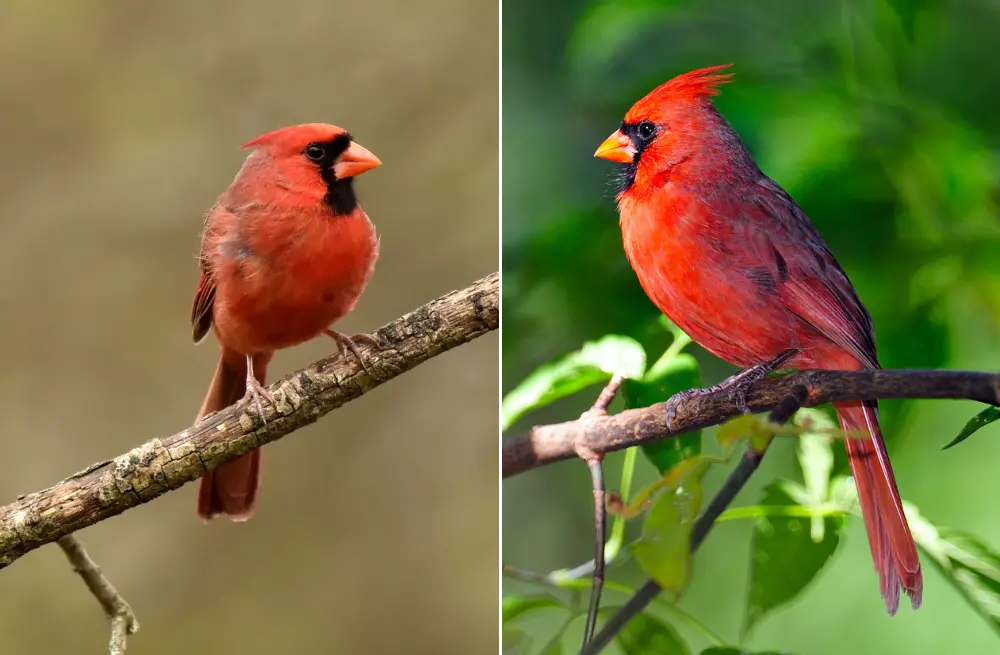The 15 Best Manchester’s Bird Sightings
Manchester, a bustling urban center in the United Kingdom, might not be the first place that comes to mind when you think of birdwatching.
However, this vibrant city is home to a surprising array of bird species. From lush parks to tranquil canals, Manchester offers a diverse range of habitats that attract both common and rare feathered residents and visitors.
In this article, we’ll take you on a journey through the 15 best bird sightings in Manchester, showcasing the city’s unexpected avian wonders.
01. Peregrine Falcon (Falco peregrinus)
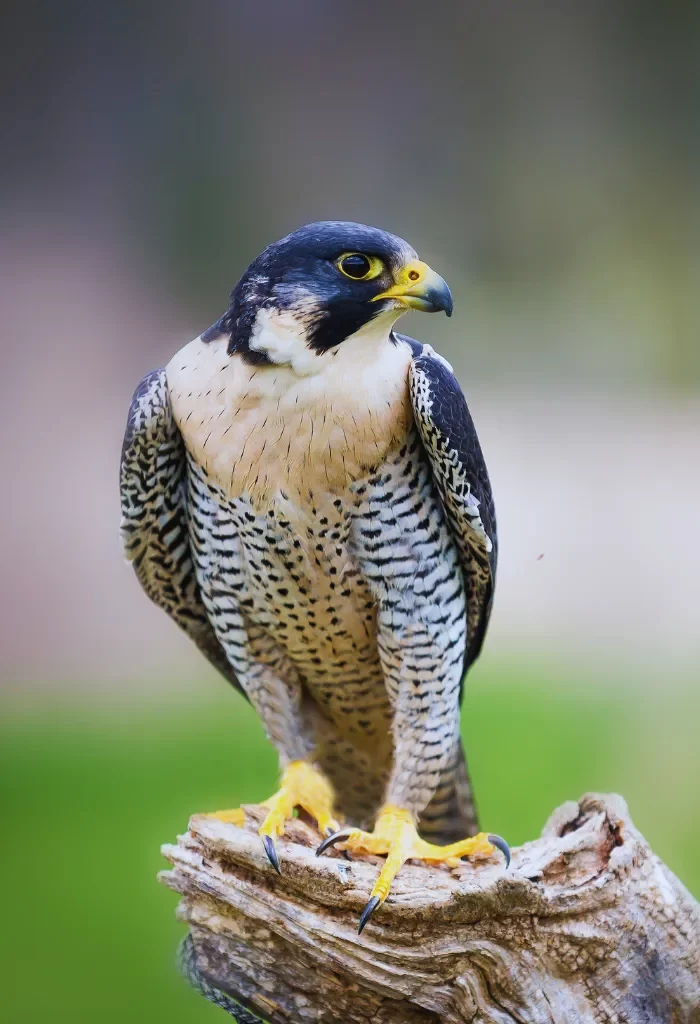
Where to Spot: Manchester Cathedral and other tall city buildings.
Peregrine falcons are among the most thrilling sights in Manchester’s urban birdwatching scene. While the city may seem an unlikely habitat, these majestic raptors have adapted to urban life.
Their favorite nesting spots include the heights of Manchester Cathedral and other tall city buildings, where they have found ample space and solitude.
These aerial predators are known for their breathtaking hunting displays. Watch in awe as they soar above the city skyline, their sharp eyes scanning for pigeons and other prey.
Peregrines are renowned for their incredible speed and accuracy during hunts, often achieving speeds of up to 240 miles per hour during a stoop (high-speed dive).
Don’t forget your binoculars and camera to capture these urban hunters in action. Manchester’s peregrine falcons are a testament to the adaptability of wildlife in the heart of the city.
02. European Robin (Erithacus rubecula)
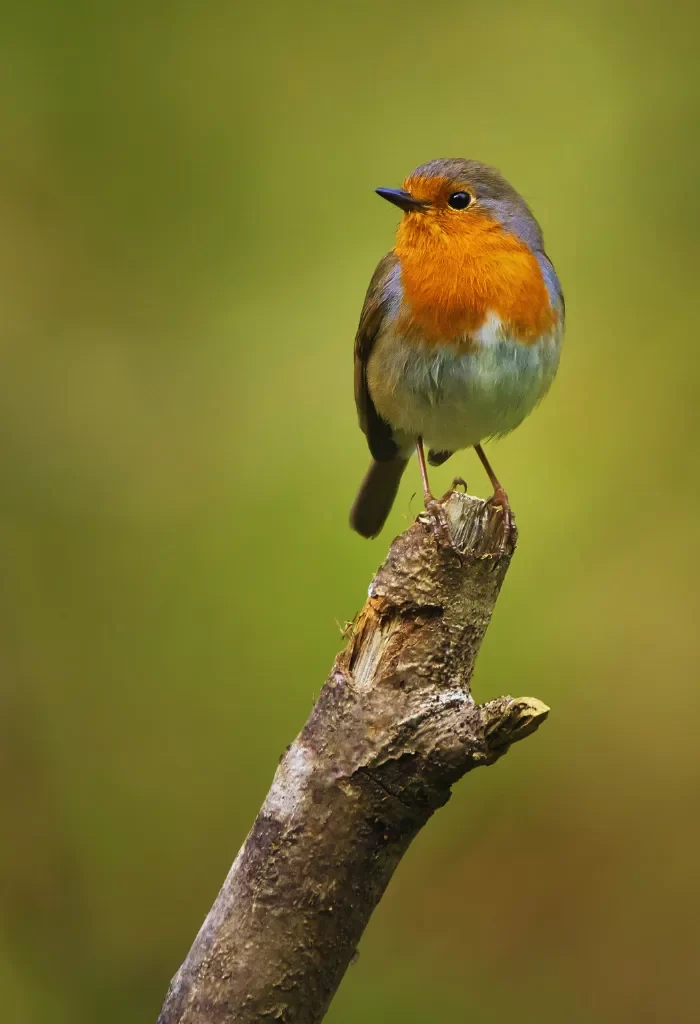
Where to Spot: Heaton Park and local gardens.
The European Robin, with its distinctive red breast, is a beloved fixture in Manchester’s birdwatching scene. These charming birds add a vibrant touch of color to the city’s green spaces, making them a favorite among local bird enthusiasts.
Heaton Park, one of Manchester’s largest and most scenic parks, is an excellent place to spot these robins. You’ll often find them flitting about in the park’s well-maintained gardens and wooded areas. However, European robins are not limited to parks alone; they’re equally at home in local gardens across the city.
Known for their friendly and inquisitive nature, European robins are known to approach gardeners, making them one of the most endearing and iconic bird species in Manchester. Whether you’re a seasoned birdwatcher or a novice, the European Robin’s presence is sure to brighten your day in the city’s green oases.
03. Kingfisher (Alcedo atthis)
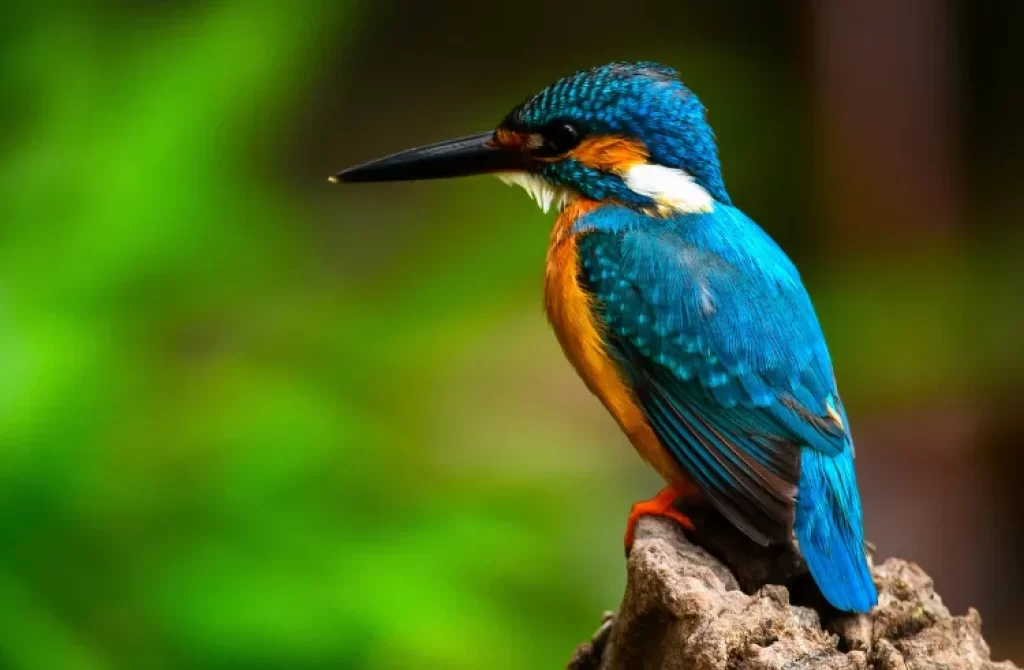
Where to Spot: Bridgewater Canal and River Irwell.
In Manchester’s waterways, the kingfisher reigns as a dazzling jewel among birds. With its iridescent blue and orange plumage, this avian wonder adds a vibrant splash of color to the city’s aquatic landscapes.
To catch a glimpse of these graceful divers, head to the tranquil shores of Bridgewater Canal and the scenic banks of the River Irwell. Kingfishers are often seen darting from overhanging branches into the water, displaying their remarkable fishing skills.
With patience and a keen eye, you can witness these magnificent birds in action as they plunge beneath the surface to catch their aquatic prey.
The kingfisher’s stunning appearance and agile hunting make it a prized sighting for any birdwatcher exploring Manchester’s waterscapes.
04. Tufted Duck (Aythya fuligula)
Where to Spot: Etherow Country Park and Sale Water Park.
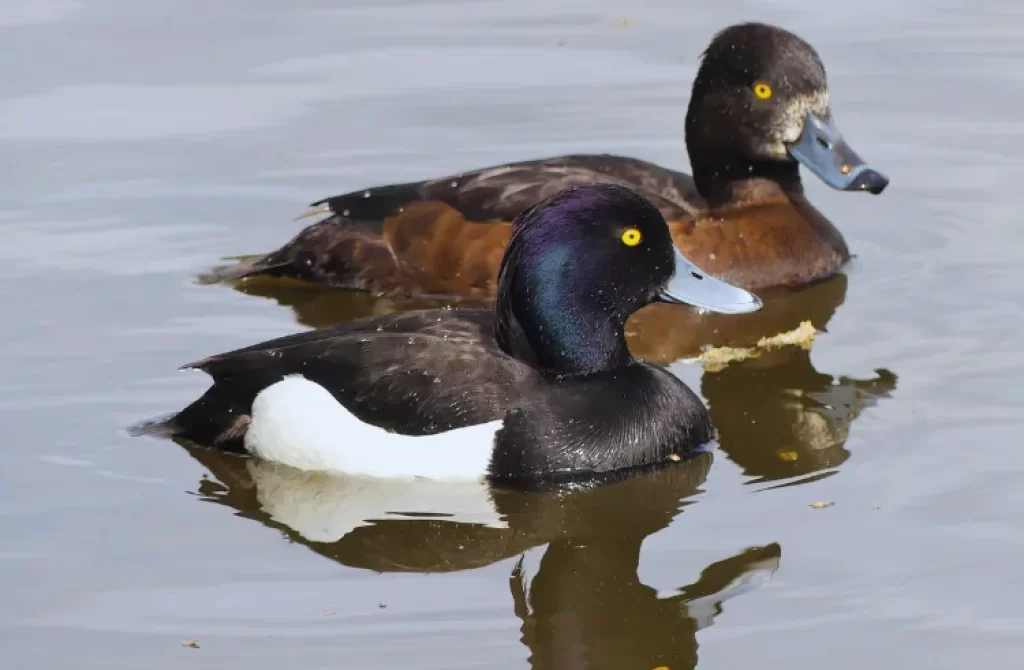
In the tranquil waters of Manchester’s lakes, tufted ducks are a common and distinctive presence. Easily recognized by the tufted feathers atop their heads, these waterfowl make for delightful sightings for birdwatchers.
To encounter tufted ducks in Manchester, venture to scenic locations like Etherow Country Park and Sale Water Park. These birds often gather in these serene aquatic settings, where you can appreciate their unique appearance and observe their behavior in their natural habitat.
Whether you’re an avid birder or simply looking to connect with nature, the tufted duck’s presence in these picturesque parks is a charming addition to your birdwatching experience.
05. Eurasian Sparrowhawk (Accipiter nisus)
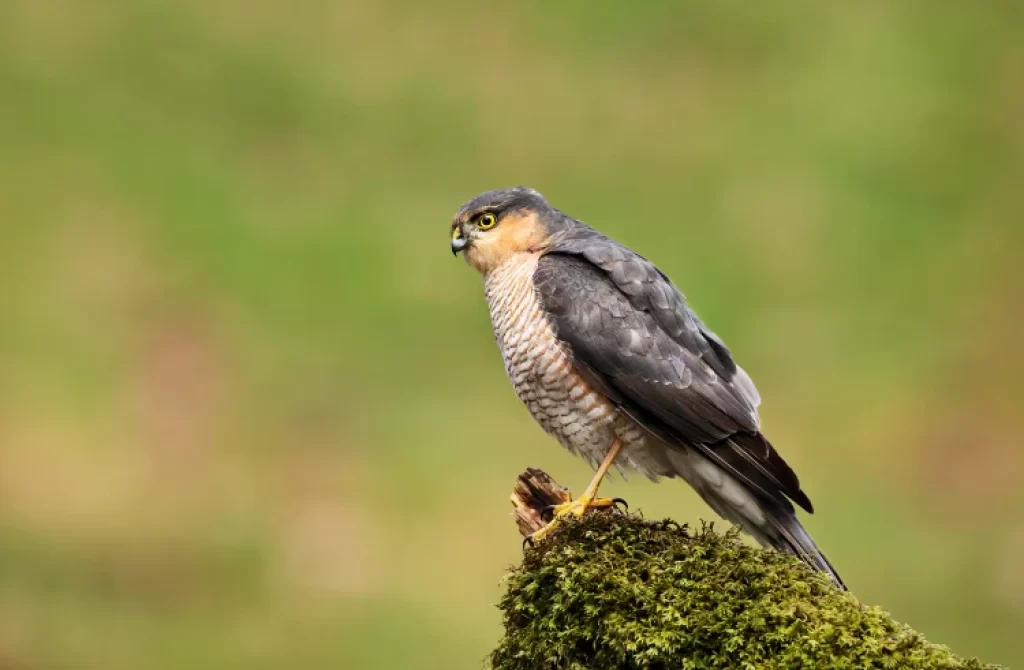
Where to Spot: Woodlands and parks throughout Manchester.
In Manchester’s woodlands and parks, keep a keen eye out for the Eurasian Sparrowhawk. These agile predators are often seen zipping through the city’s wooded areas as they pursue small birds.
Their remarkable hunting skills and distinctive appearance make them a captivating sight for bird enthusiasts.
As you explore Manchester’s green spaces, particularly woodlands and parks, watch for these skilled hunters. Witnessing a Eurasian Sparrowhawk in action, engaged in its pursuit of smaller avian prey, adds an element of excitement to your birdwatching adventures in the heart of the city.
06. Great Crested Grebe (Podiceps cristatus)
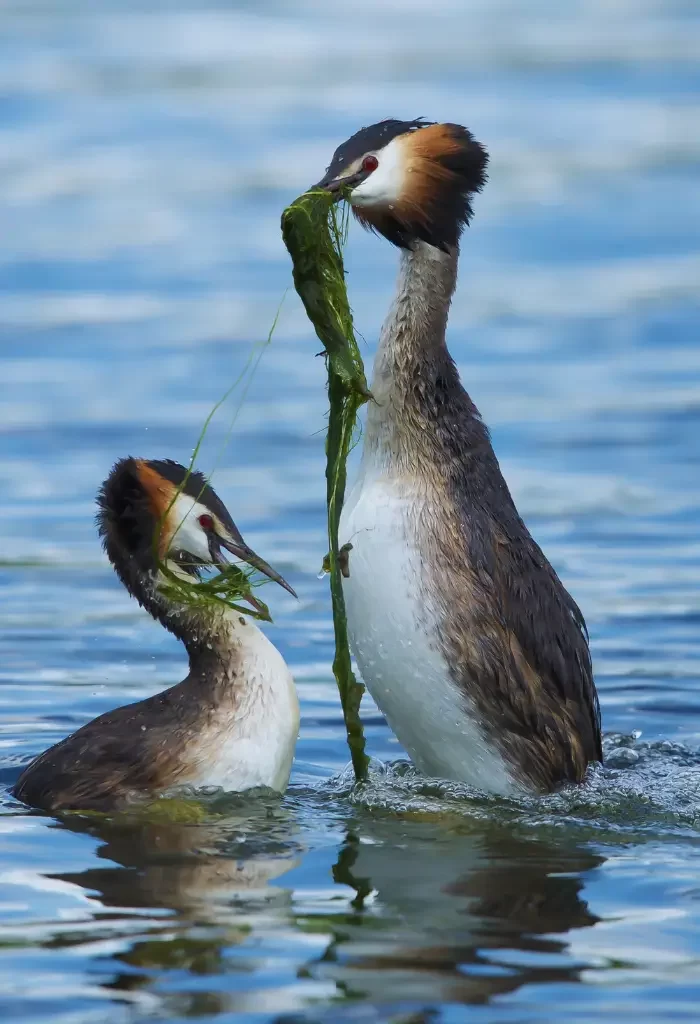
Where to Spot: Chorlton Water Park and Sale Water Park.
For a unique birdwatching experience in Manchester, head to Chorlton Water Park and Sale Water Park, where you can observe the elegant great crested grebes. These birds are known for their striking red eyes and elaborate courtship displays, making them a captivating sight on the city’s lakes.
As you stroll along the shores of these parks, keep an eye out for these graceful birds. With their distinctive appearance and fascinating behaviors, great crested grebes are a must-see for bird enthusiasts exploring Manchester’s natural spaces.
07. Little Egret (Egretta garzetta)
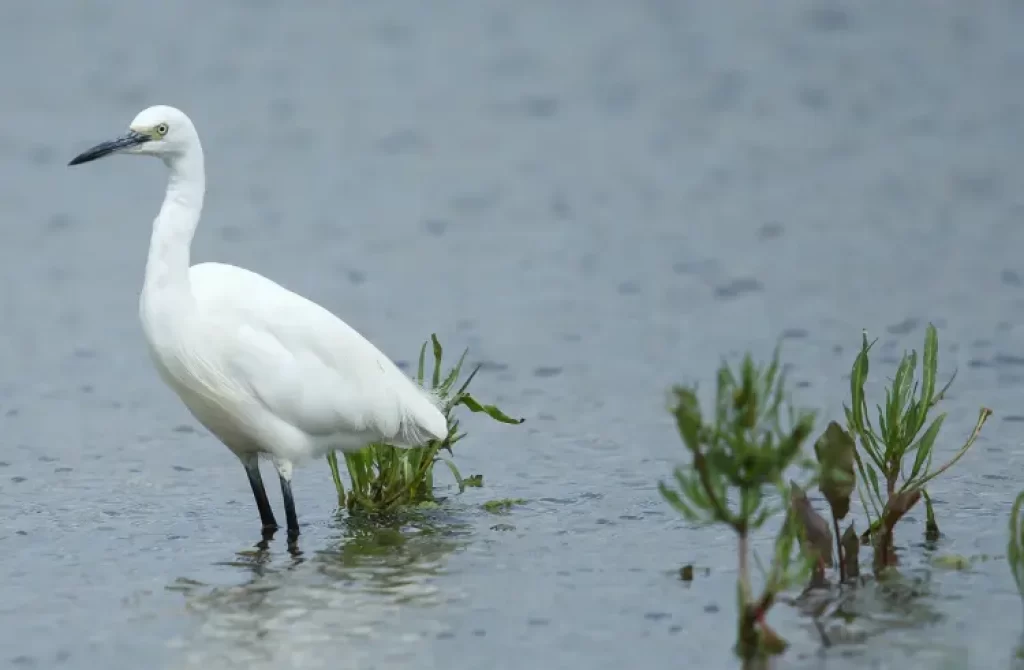
Where to Spot: Salford Quays and other wetland areas in Manchester.
Among the myriad of Manchester bird sightings, the Little Egret emerges as a beacon of elegance and grace. Adorned with a pristine white plumage that almost gleams under the sun, this bird stands out distinctly with its black legs and attention-catching yellow feet.
As it wades through Manchester’s wetland areas, particularly the picturesque Salford Quays, its poised hunting technique becomes an absorbing sight.
The Little Egret’s presence in the heart of Manchester speaks volumes about the city’s commitment to preserving natural habitats amid its urban sprawl.
This bird, typically more associated with warmer climates, has found solace in Manchester’s waterways, indicative of the city’s rich and diverse ecosystem.
For the best experience observing the Little Egret in its natural habitat, here are some insights:
- Feeding Habits: Unlike some other waders, the Little Egret has a dynamic approach to hunting. They often shuffle their feet in the water to disturb small aquatic creatures, making them easier prey.
- Nesting: While they’re mostly solitary when feeding, they tend to nest in colonies, often high in trees to keep their chicks safe from predators.
- Migration Patterns: While many remain in Manchester throughout the year, some Little Egrets do migrate, making certain times of the year more optimal for sightings.
- Adaptability: A testament to their resilience, these birds have adapted remarkably well to urban settings, finding food even in the more developed parts of Manchester.
08. Common Kestrel (Falco tinnunculus)
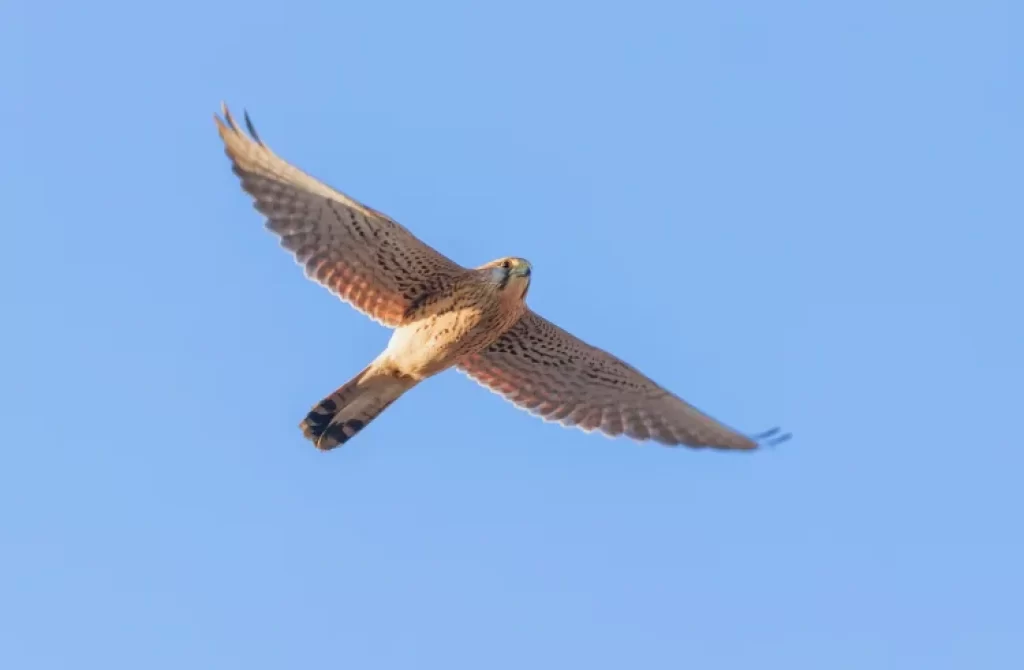
Where to Spot: Open fields and urban green spaces.
The common kestrel, with its distinctive hovering flight, is a familiar sight in Manchester’s open fields and urban green spaces.
These raptors are often seen scanning the ground below, hunting for small mammals and birds. Keep an eye on their characteristic hovering behavior, where they use rapid wing beats to maintain a stationary position in the air before making a sudden dive to seize their prey.
To spot common kestrels, head to locations with ample open spaces, such as parks, meadows, and even city gardens. They are adaptable birds and have successfully integrated into urban environments, making them accessible to birdwatchers across Manchester.
With their keen hunting skills and striking appearance, common kestrels are a captivating addition to the city’s avian residents.
09. Common Tern (Sterna hirundo)
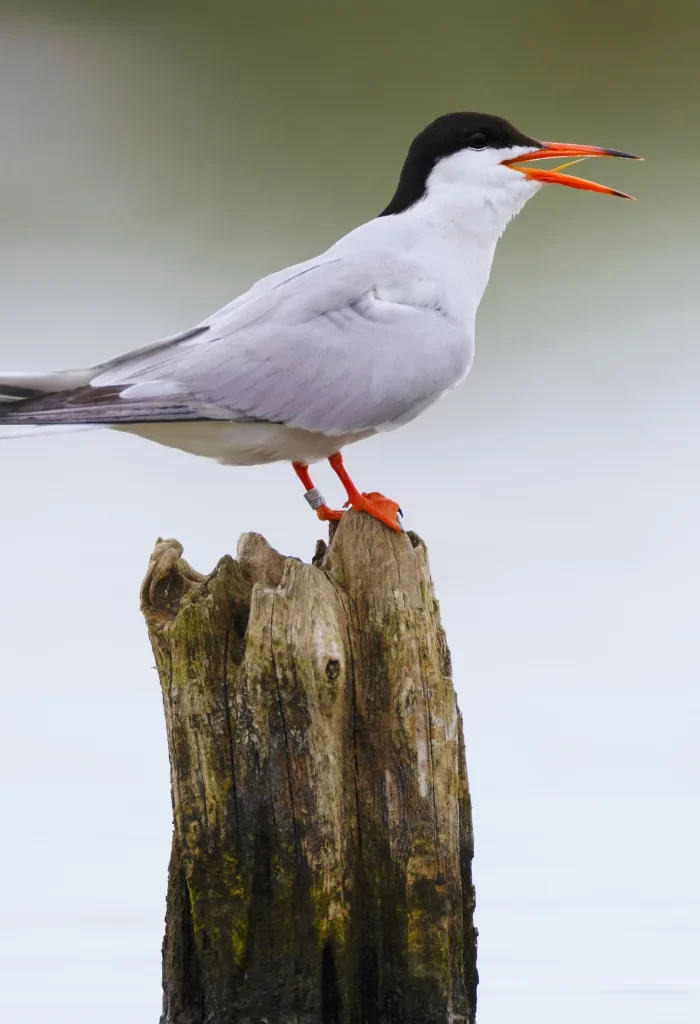
Where to Spot: Manchester’s canals and reservoirs.
The common tern, recognized by its elegant appearance and distinctive black-capped head, is a common sight around Manchester’s canals and reservoirs. These agile birds are known for their impressive fishing skills, as they gracefully dive into the water to catch fish.
To spot common terns, look for them near bodies of water like canals, rivers, and reservoirs, where they are most active during the breeding season. Be sure to listen for their characteristic calls, which can help you locate them even before they dive for their aquatic prey.
Observing these birds in action as they plunge into the water is not only a treat for bird enthusiasts but also a testament to nature’s precision and grace.
10. Mistle Thrush (Turdus viscivorus)
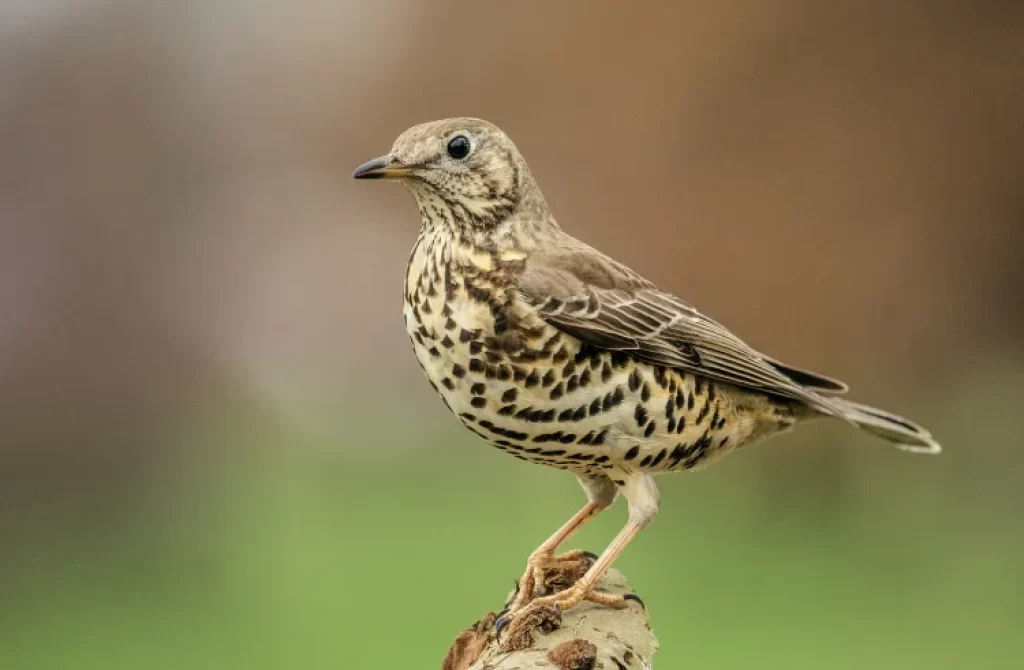
Where to Spot: Platt Fields Park and wooded areas.
In Manchester’s woodlands, including places like Platt Fields Park, you can often encounter the mistle thrush. These birds are notable for their melodious songs, which fill the air during the breeding season.
If you’re interested in birdwatching, the wooded areas around the city are a great place to listen for the distinctive calls and songs of the mistle thrush.
Their presence and beautiful vocalizations add a delightful touch to the natural soundscape of these urban green spaces. Keep an ear out for their songs, which are a true reflection of the city’s avian diversity.
11. Grey Wagtail (Motacilla cinerea)
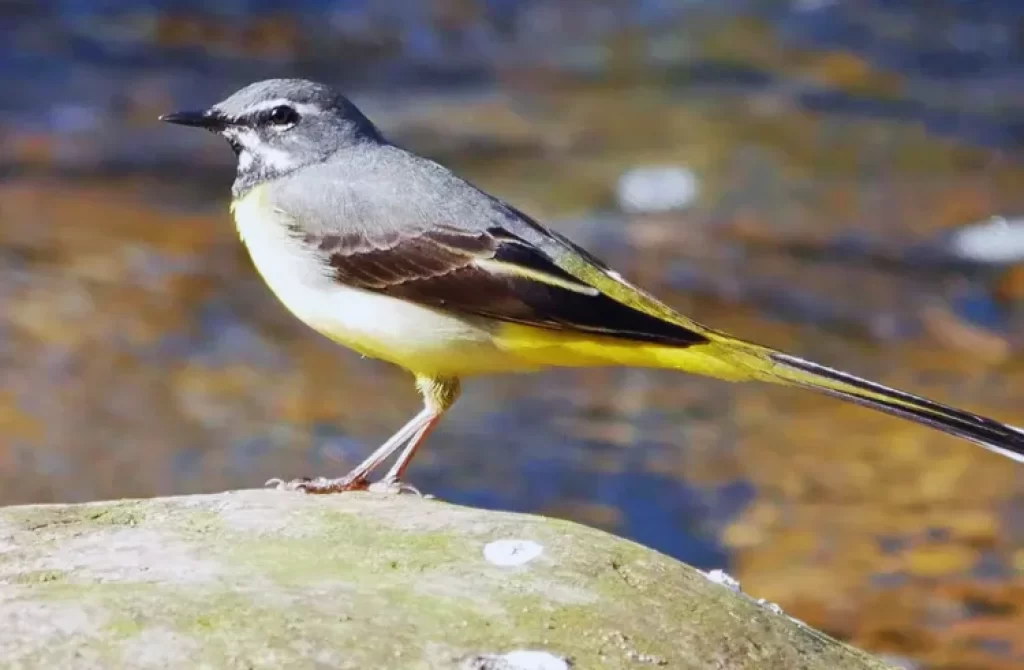
Where to Spot: Rochdale Canal and River Medlock in Manchester.
A quintessential feature in Manchester bird sightings is the lively Grey Wagtail. Despite its name, the bird is best identified by its striking bright yellow underparts, contrasted beautifully against its soft grey upper.
Their characteristic bobbing tails add to their animated demeanour as they move gracefully along the water’s edge.
The Rochdale Canal and the River Medlock serve as favoured habitats for these birds, where they forage for insects both flying and aquatic.
The running water and the stony banks provide an ample supply of their diet, and their agility allows them to deftly capture prey mid-flight or even below the water’s surface.
Their distinctive song, a mix of sharp calls and melodious tunes, often resonates in these areas, providing an acoustic treat for those tuned into the sounds of nature.
For those passionate about Manchester bird sightings, the sight of a Grey Wagtail playfully flitting about or balancing on a floating leaf or stone is both enchanting and memorable.
Their presence serves as a testament to the diverse birdlife that thrives within Manchester’s bustling environment, blending urbanity with the wonders of the natural world.
12. Collared Dove (Streptopelia decaocto)
Where to Spot: Urban gardens, parks, and residential areas.
Collared doves, often referred to as the Eurasian collared dove, are a common and charming sight in Manchester’s urban landscape.
These medium-sized doves are known for their soft gray plumage, slender bodies, and the distinguishing black “collar” on the nape of their necks.
They are typically seen perched on tree branches, rooftops, or foraging on the ground. Collared doves are social birds and are often spotted in pairs or small flocks, adding a sense of companionship to the urban environment. Their gentle and repetitive “cooing” calls are soothing and contribute to the city’s natural ambiance.
Collared doves have thrived in the city due to their adaptability to human environments. They feed on seeds and grains found in bird feeders, gardens, and parks. Their ability to coexist with humans and adapt to changing landscapes has made them a staple in Manchester’s birdlife.
To spot collared doves, visit urban gardens, parks, and residential areas, especially those with bird feeders or ample greenery. Look for them perched on tree branches, rooftops, or foraging on the ground. Keep your ears open for their gentle “cooing” calls, which are more prevalent during their active periods.
Fun Fact: Collared doves are known for their rapid population growth. They were first recorded in the UK in the 1950s and have since become one of the most widespread and recognizable urban doves.
Photography Tip: Capturing collared doves can be a rewarding experience. Use a camera with a zoom lens to get up close without disturbing them. Early morning or late afternoon provides soft, flattering light for photography.
13. Long-tailed Tit (Aegithalos caudatus)
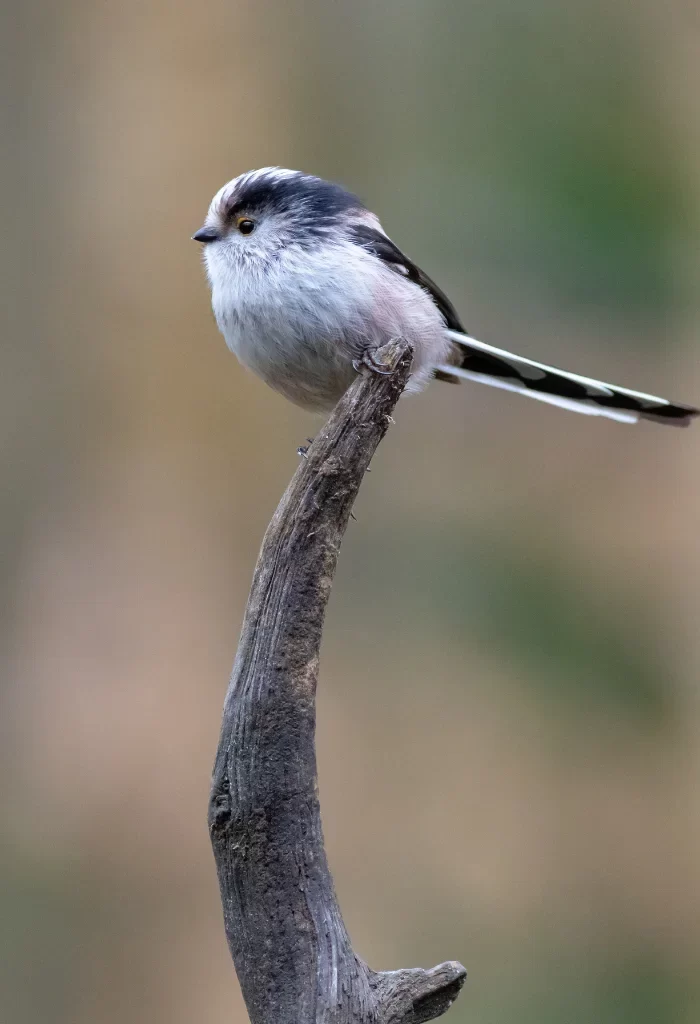
Where to Spot: Chorlton Water Park and Heaton Park, among other local green spaces.
Manchester’s birdwatching scene is filled with delightful surprises, and among them are the charming Long-tailed Tits. These tiny, fluffy birds are known for their adorable appearance and acrobatic antics. Let’s explore where and how you can spot these feathered delights in the city’s green spaces.
Long-tailed tits are charming and distinctive birds known for their adorable appearance. They have soft and fluffy plumage that appears predominantly white with subtle pinkish hues.
Their name comes from their strikingly long and slender tails, which are longer than their bodies. These social birds are often seen in small flocks, flitting among trees and shrubs.
When you encounter Long-tailed Tits, you’ll notice their agile and acrobatic nature. They’re skilled at moving in a coordinated fashion through vegetation, hunting for insects, spiders, and tiny invertebrates. Their high-pitched, melodious calls add a sweet soundtrack to Manchester’s parks.
These delightful birds thrive in a variety of green spaces, from woodlands to parks. Chorlton Water Park and Heaton Park are particularly excellent spots to observe them, as the diverse vegetation provides ample opportunities for foraging.
To spot Long-tailed Tits, visit local green spaces, especially those with a mix of trees, shrubs, and open areas. Look for small flocks of these birds as they flit and flutter through branches. Be patient and attentive, as their energetic behavior can lead to delightful sightings.
Fun Fact: Long-tailed tits are known for their remarkable nesting habits. They build intricate, domed nests using spider silk, lichen, and feathers. These nests are not only cozy but also stretchy, allowing them to accommodate growing families.
Photography Tip: Capturing the vibrant and playful nature of Long-tailed Tits can be a rewarding endeavor. Use a camera with a telephoto lens to capture their intricate details. Early morning or late afternoon lighting can enhance the softness of their plumage.
14. Goldfinch (Carduelis carduelis)
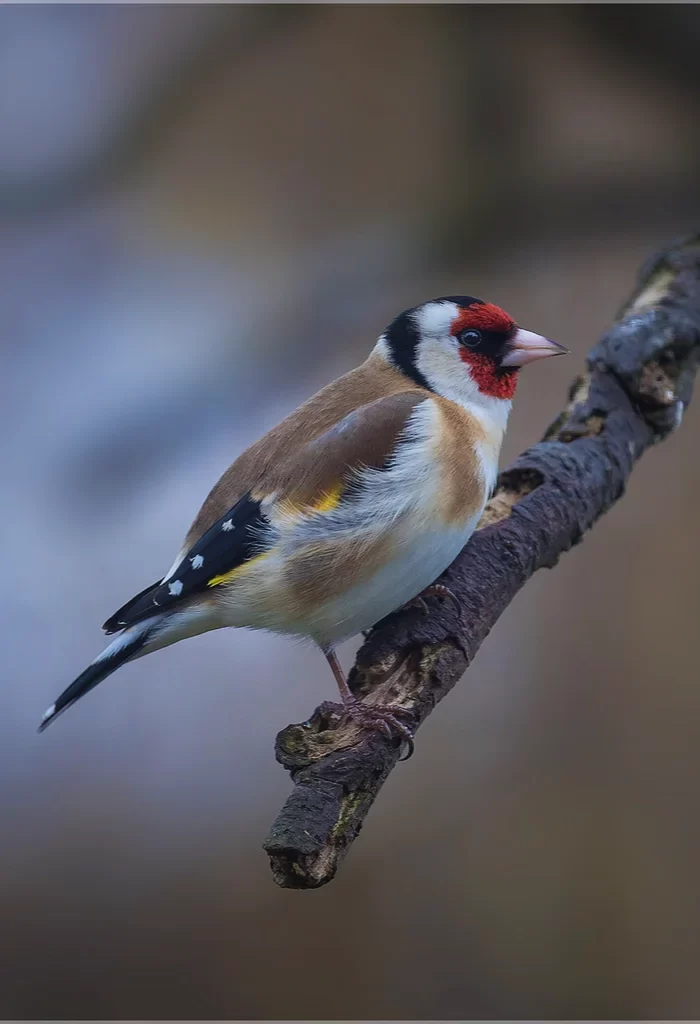
Where to Spot: Dunham Massey and local gardens around Manchester.
The goldfinch is a delightful sight for anyone interested in Manchester bird sightings. Recognizable by its radiant red face and striking yellow wing patches, it’s no wonder that this bird ranks as a favorite among enthusiasts.
The city’s green spaces, especially at Dunham Massey, provide an ideal environment for these charming birds to thrive.
But they aren’t limited to the wilder areas of Manchester. Many residents have also reported sightings in their own backyards and gardens.
Whether you’re an avid birdwatcher or just someone with a casual interest, the goldfinch offers a burst of color and beauty amidst the urban landscape.
15. Willow Warbler (Phylloscopus trochilus)
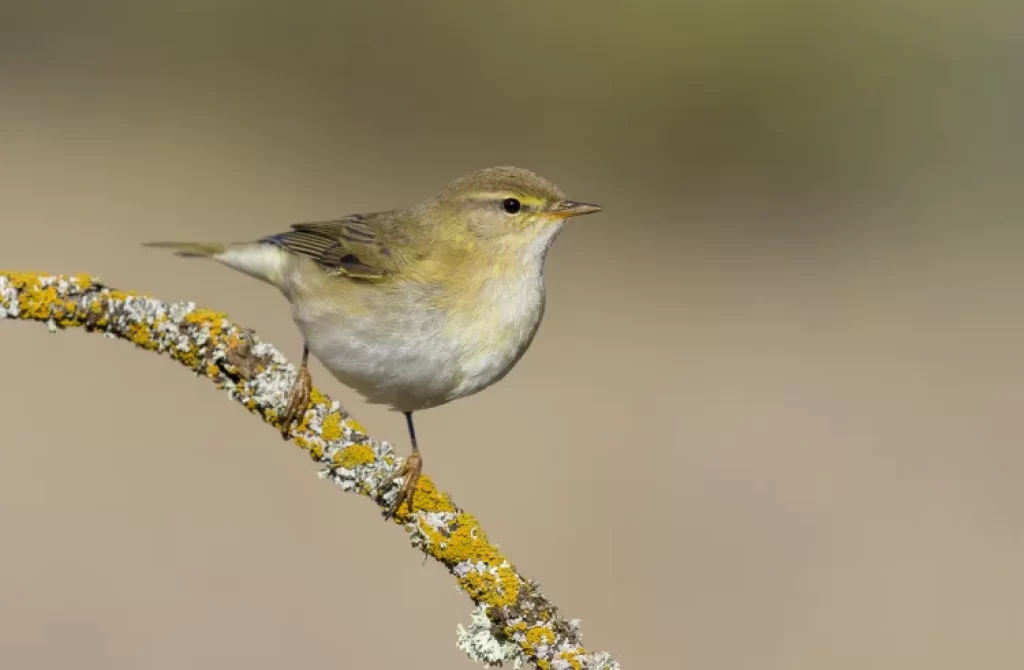
Where to Spot: Riverbanks, especially along the River Mersey and Bridgewater Canal in Manchester.
When it comes to Manchester bird sightings, the Common Kingfisher stands out with its dazzling blue and orange plumage.
A bird of wetland habitats, it’s frequently seen darting along the water’s edge or perched silently on a branch overhanging the water, waiting for the right moment to dive for its prey.
The River Mersey and Bridgewater Canal in Manchester are prime locations to catch a glimpse of this jewel-toned bird. The clarity of the water and abundance of small fish make these areas perfect hunting grounds for the kingfisher.
While its vibrant colors make it easily distinguishable, it’s the bird’s distinct, sharp call that often alerts birdwatchers to its presence before it’s even seen.
For those interested in capturing the essence of Manchester’s natural beauty, observing the Common Kingfisher in action—whether it’s its rapid flight just above the water’s surface or its impeccable precision as it dives for a catch—is truly a spectacle to behold.
What birds are in Manchester England?
Manchester, England, is home to a diverse range of birds. Common urban species include the House Sparrow, European Robin, and Blackbird. Wetland areas host waterbirds like Mallards, Mute Swans, and Grey Herons.
Raptors such as the Common Buzzard and Sparrowhawk are also present. Wooded areas are frequented by the Nuthatch and Green Woodpecker.
Seasonally, migratory birds like Swallows arrive, while winter sees visitors like the Fieldfare. Nighttime may reveal owls like the Tawny Owl. Joining a local birdwatching group can offer deeper insights.
Are there Eagles in Manchester?
Eagles are not typically found within the urban areas of Manchester. However, the UK does have a few species of eagles, most notably the Golden Eagle and the White-tailed Eagle (also known as the Sea Eagle).
The Golden Eagle is primarily found in the upland areas of Scotland, and there have been reintroduction efforts in some parts of England and Wales. The White-tailed Eagle, after being reintroduced, is mainly found in Scotland, but there have been reintroduction projects in other parts of England.
While it’s improbable to spot an eagle within Manchester’s city limits, it’s not impossible for one to occasionally pass through the area, especially as reintroduction efforts continue and populations potentially expand. However, consistent sightings of eagles would be more likely in more remote or upland areas of the UK.
Conclusion
Manchester may be known for its industrial heritage and thriving cultural scene, but it’s also a hidden gem for bird enthusiasts. From peregrine falcons nesting on skyscrapers to the enchanting songs of willow warblers in woodlands, the city offers a surprising variety of birdwatching opportunities.
So, next time you’re in Manchester, don’t forget to bring your binoculars and explore the avian wonders that thrive amid the urban landscape. Happy birdwatching!
Up next:
Kenno Marques is a self-taught English speaker deeply passionate about nature and wildlife. He dedicates his time to scouring the web for the latest animal news and engaging content, which he shares on various websites. Fluent in three languages, Kenno is currently on a journey to master German. His commitment to fostering an understanding of the natural world makes him a valuable contributor to the online community.





